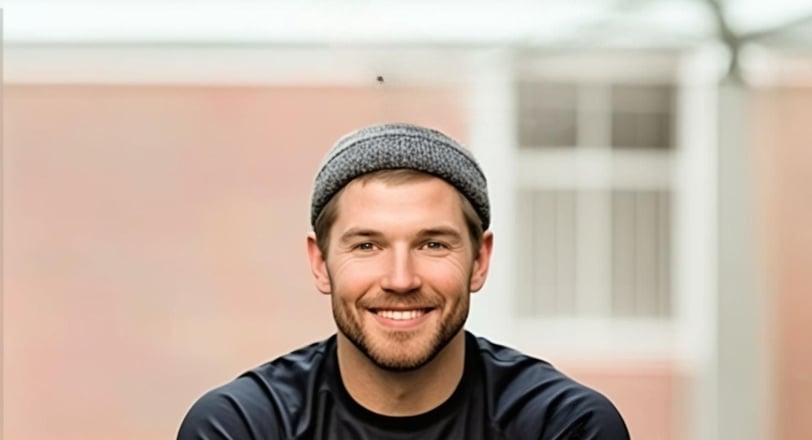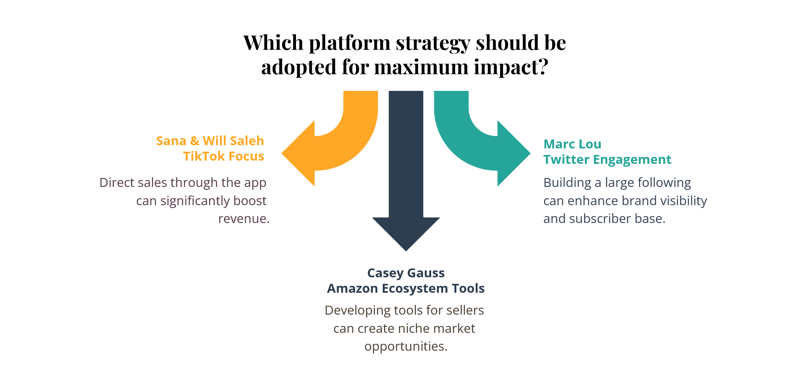From Zero to Viral: Entrepreneur Success Stories That Will Inspire Your Hustle
Discover how real entrepreneurs went from zero to viral success. No overnight miracles—just strategy, platform mastery, and authentic storytelling to fuel your hustle.
ENTREPRENEURS STORIES


From Zero to Viral: Entrepreneur Success Stories That Will Inspire Your Hustle
Let's be real—starting a business isn't exactly a walk in the park. Between the late nights, financial risks, and that voice in your head questioning your every move, the entrepreneurial path can feel like you're scaling a mountain in flip-flops. But here's the thing: those who've made it to the summit didn't get there overnight.
The journey from zero to viral success isn't about luck or some magical formula. It's about resilience, smart platform choices, and authentic storytelling that connects with real people. So if you're grinding away on your side hustle wondering if it'll ever take off, these stories are your reminder that even the biggest success stories started somewhere humble.
Let's dive into three entrepreneur journeys that prove viral success isn't accidental—it's crafted through strategy, persistence, and understanding what makes people click that follow button.
Casey Gauss: When Purpose Trumps Profit
Ever felt like you're just going through the motions with your business? Casey Gauss knows that feeling all too well. His company, Viral Launch, started as nothing more than a side project—something to bring in extra cash while he pursued his real passion for technology.
The Reluctant Entrepreneur
Casey didn't set out to build an empire. When his friend Jordan proposed starting a business creating tools for Amazon sellers, Casey viewed it as a supplementary income source. Jordan, already successful on Amazon, took 60% equity while Casey took 40%, handling the technical side of building the platform.
This casual "let's make some money on the side" arrangement could have remained exactly that. But here's where Casey's story takes its first turn: while his partner maintained a balanced college life, Casey poured every waking moment into improving Viral Launch for their customers. His dedication was so obvious that Jordan eventually adjusted their equity to a 50/50 split.
The Crisis of Purpose
Eight months in, Casey had essentially taken full operational control of Viral Launch. The business was making good money, but Casey hit a wall that many entrepreneurs face: the purpose problem.
"Am I just helping rich people get richer?" he wondered. With little personal interest in wealth accumulation, Casey seriously considered walking away from his successful business to pursue projects more aligned with his desire to help disadvantaged people.
This is the crossroads many entrepreneurs face: financial success without fulfillment isn't success at all.
The Pivot Point
The game-changer for Casey came through direct customer interactions. As he connected with users, he discovered the real impact his platform was having on everyday people:
A father who sold his truck to start an Amazon business so he could spend more time with his son diagnosed with mental illness
An entrepreneur who took loans to launch on Amazon and was struggling until Viral Launch helped turn things around
These stories revealed that Casey's business was fulfilling his deeper purpose—just not in the way he initially imagined. He was helping everyday entrepreneurs achieve their dreams and improve their lives.
This realization transformed Casey's relationship with his business. A year into operations, he bought out his co-founder's half of the business, becoming the sole owner of a growing tech company. The key lesson? Sometimes your purpose finds you, not the other way around.
Sana and Will Saleh: When Crisis Creates Opportunity


If you think you need years of business experience and a fancy MBA to launch a successful company, the Salehs are about to change your mind.
From Pandemic Layoffs to TikTok Triumph
When COVID-19 cost Sana and Will Saleh their jobs, they turned to a creative outlet during quarantine: designing tie-dyed hijabs. Like many during lockdown, they joined TikTok and casually shared their colorful creations without commercial intent. No business plan, no startup capital—just creative products and a social platform.
The magic happened when viewers started asking where they could buy these hijabs. Instead of rushing to launch, the Salehs made a strategic move—they built anticipation for their product before formally establishing a business.
The results? Overnight, a single viral video garnered over 50,000 followers and one million views.
Strategic Platform Mastery
What makes the Salehs' story particularly noteworthy is their laser focus on a single platform. Rather than spreading themselves thin across multiple channels, they went all-in on TikTok with a clear strategy:
Sharing behind-the-scenes glimpses of their operation
Providing hijab styling tutorials
Creating engaging content around product launches
This focused approach paid off spectacularly. Their account grew to over 144,000 followers with 4.2 million likes, and remarkably, 60% of their sales come directly through TikTok.
The Risk That Paid Off
With social validation in hand, the couple took their big leap—investing their life savings to launch Lala Hijabs. This wasn't blind faith; it was a calculated risk based on clear market validation.
What's most impressive is their marketing efficiency: they relied exclusively on organic TikTok traffic, completely eschewing paid advertising. Their strategy of showcasing new products first on TikTok created a direct pipeline from content to commerce.
The Salehs prove that authentic connection on a single platform can be more valuable than a massive marketing budget spread across multiple channels.
Marc Lou: The Power of Public Failure and Rapid Iteration


If you're looking for overnight success, Marc Lou's story isn't it—and that's exactly why it's worth your attention.
The Two-Year Zero
Let's start with the reality check: it took Marc Lou two full years to earn his first dollar online. Despite growing a SaaS business to $3,000 monthly recurring revenue, after four years of constant effort with limited results, Marc fell into depression and temporarily abandoned his entrepreneurial aspirations in 2021.
This isn't the glossy startup story we're used to hearing, but it's the truth behind most successful businesses. The valley before the peak is real, and Marc lived it.
The Turnaround Strategy
The catalyst for Marc's revival came after being fired by entrepreneur Tai Lopez in November 2021. Instead of seeing this as another failure, Marc discovered the "build-in-public" community on Twitter—entrepreneurs who share their business journeys, successes and failures alike, in real-time with their audience.
This philosophy of radical transparency became the cornerstone of his new approach. What followed was nothing short of extraordinary:
Within just two years, Marc launched 17 different products
Grew his Twitter following to 55,000
Built a newsletter with 7,000 subscribers
Reached monthly revenue of $65,000 with 91% profit margins
Accomplished all this as a solopreneur without employees
Rapid Iteration and Transparent Building
Marc's approach flipped the traditional business model on its head. Rather than developing products in secrecy and launching with fanfare, he embraced rapid iteration and public learning.
This approach allowed him to quickly test ideas in the market, learn from user feedback, and iterate or pivot as necessary. His most recent success, LogoFast, achieved the coveted #1 Product of the Day status on Product Hunt in December 2023.
The "build-in-public" methodology transformed potential customers into allies and advocates, creating a network effect that amplified his marketing efforts without additional cost.
The Blueprint: Common Patterns in Viral Success
Looking across these three different journeys, several powerful patterns emerge:
1. Find Deeper Purpose Beyond Profit
Casey Gauss nearly abandoned his successful business until he discovered its deeper impact on real people's lives. The Salehs found purpose in creating products that resonated with their community. Marc Lou discovered meaning through transparent sharing of his entrepreneurial journey.
Key Takeaway: When your business connects to something larger than money—helping others achieve dreams, serving an underrepresented market, or building authentic connections—you'll find the resilience to weather inevitable challenges.
2. Master One Platform, Not All of Them
The most successful entrepreneurs don't spread themselves thin:


Key Takeaway: Identify which platform best aligns with your product, audience, and personal strengths, then commit to becoming an expert creator within that ecosystem.
3. Authentic Storytelling Beats Traditional Marketing
Each entrepreneur succeeded by sharing genuine narratives:
Casey Gauss shared real customer transformation stories
The Salehs offered behind-the-scenes glimpses into their creation process
Marc Lou openly discussed both successes and failures
Key Takeaway: Transform your business journey into a compelling narrative that invites audience investment and builds community around your brand.
4. Adaptability at Critical Junctures
Success often hinges on how entrepreneurs respond to unexpected challenges and opportunities:
Casey pivoted from viewing his business as a side project to recognizing it as his primary purpose
The Salehs transformed a quarantine hobby into a full-fledged business
Marc completely reinvented his approach after multiple failures and job loss
Key Takeaway: The ability to reassess, pivot, and evolve in response to both setbacks and opportunities is crucial for breakthrough success.
5. The "Overnight Success" Myth
None of these entrepreneurs achieved instant success:
Marc Lou took two years to earn his first dollar online
Casey Gauss spent months questioning his business purpose
The Salehs' "overnight" TikTok success came after developing products during pandemic unemployment
Key Takeaway: Prepare for a marathon, not a sprint. Celebrate incremental progress while maintaining focus on long-term objectives.
Applying These Lessons to Your Entrepreneurial Journey
Ready to apply these insights to your own hustle? Here's how:
1. Find Your "Why" Beyond the Bank Account
Take time to identify how your business connects to something larger than profit. Ask yourself:
What problem am I genuinely passionate about solving?
How does my business improve lives beyond the transaction?
What customer stories would make me feel my work matters?
When the inevitable rough patches come, this deeper purpose will fuel your persistence.
2. Choose Your Platform Battlefield Wisely
Instead of trying to be everywhere, identify your primary platform battleground:
Where does your target audience naturally gather?
Which platform aligns with your content strengths and product type?
Where can you consistently show up and master the platform's nuances?
Then go all-in on becoming an expert creator on that platform.
3. Build in Public, Learn in Public
Consider how transparency might accelerate your growth:
Share your process, not just your polished results
Document your journey, including setbacks and learnings
Involve your audience in product development through feedback loops
This approach transforms audience members from passive observers to active participants in your success.
4. Expect and Embrace the Valley
Reset your expectations about the timeline to success:
Acknowledge that "overnight success" typically follows years of invisible work
Create financial and emotional runway for the long game
Celebrate small wins while maintaining perspective on larger goals
Remember Marc Lou's two-year journey to his first dollar earned—and his subsequent rapid growth.
Conclusion: Your Viral Success Story Starts Now
The entrepreneurial journeys of Casey Gauss, Sana and Will Saleh, and Marc Lou reveal that viral business success stems not from luck or mysterious algorithms, but from strategic platform utilization, authentic storytelling, and a willingness to adapt.
Each faced significant challenges—questioning their purpose, losing jobs, experiencing repeated failures—yet transformed these obstacles into catalysts for innovation and growth.
Your own path to entrepreneurial success may not look exactly like theirs, but the principles remain the same: find purpose beyond profit, master your chosen platform, tell authentic stories, adapt quickly, and prepare for the long game.
The question isn't whether you have what it takes to build a successful business—it's whether you're willing to persist through the invisible years before your "overnight" success story goes viral.
What step will you take today to move your entrepreneurial journey forward?


